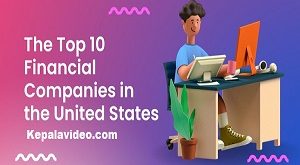One form of financial help that Americans can apply for is a student loan, which is intended to make higher education more accessible to students. In 2018, 70% of recent college grads said they had used loans to cover all or some of their expenses. With a few notable exceptions, student loans are repaid, in contrast to other forms of financial aid like grants and scholarships, which are rarely repaid. One option to get rid of student loans is through bankruptcy, but it’s not simple.
Student loan debt has grown significantly since 2006 and is expected to reach $1.73 trillion by July 2021. Borrowers who obtained a bachelor’s degree in 2019 and graduated owed about $30,000. About half of all student debt is related to graduate school, usually in much bigger amounts. The type of school, degree desired, age, race, and socioeconomic standing all have a substantial impact on loan amounts. School debt was the biggest non-mortgage liability for US households as of 2017.Research indicates that the main driver of tuition increases is growing borrowing restrictions.
Student loan default rates are disproportionately high in the for-profit education sector. 10% of college students were attending for-profit schools in 2010, yet approximately 40% of all federal student loan defaults were attributable to for-profit students. The universities with the most student debt include University of Phoenix, Walden University, Nova Southeastern University, Capella University, and Strayer University. Among them, Nova Southeastern is the sole nonprofit organization. The National Center for Education Statistics reported in 2018 that after 12 years, 52% of students at for-profit universities had defaulted on their student loans.
Three times as many defaults occur among students who drop out of school as among those who complete.1. In part because they have the largest student loan amounts, wealthy borrowers usually “…benefit affluent borrowers the most…” when the government suspends student loan repayment, according to a Brookings Institution analysis from 2023.
History
Federal student loans became accessible in 1958 via the National Defense Education Act (NDEA). They were only available to particular student groups, such as those majoring in science, engineering, or education. The program was developed in response to the Soviet Union’s Sputnik satellite launch.It disproved the myth that scientific and technological progress in the US has lagged behind other countries. The goal of the Higher Education Act of 1965 was to increase social mobility and equality of opportunity by expanding the availability of student loans during the 1960s.
The publicly traded Bank of North Dakota made the first student loan insured by the federal government in 1967.
The first big government loan scheme in the United States was the Student loan Marketing Association (Sallie Mae), which was established in 1973.
direct financing from the Department of Education (DOE) and loan origination
Government-insured loans were created and funded by private investors.
Direct-to-consumer private loans had the fastest pace of growth within the school funding sector. Because the institution was not accredited, lawmakers were investigating the “percentage of undergraduates obtaining private loans from 2003–04 to 2007–08 rose from 5 percent to 14 percent.”
The laws pertaining to disability discharge have undergone major adjustments as a consequence of the Higher Education Opportunity Act of 2008. The regulations go into effect on July 1, 2010. As of June 2010, Americans owed more money on their student loans than they did on credit cards. At least $830 billion was owed on student loans at that time, with roughly 80% coming from federal loans and 20% from private ones. By the end of 2015, the total outstanding student loan balance held and securitized was over $1.3 trillion.
Direct loans were introduced as a replacement for guaranteed loans under the Student Aid and Fiscal Responsibility Act of 2010. Although guaranteed loans did not reduce the cost of education, the Obama administration claimed that they did help private companies at the expense of the government.
The Health Care and Education Reconciliation Act of 2010 (HCERA) made the Federal Family Education Loan Program (FFELP) ineligible for financing from the private sector as of July 1, 2010. Rather, all subsidized and unsubsidized Stafford, PLUS, and consolidation loans are part of the Federal Direct Loan Program.
Loan discharge would be available to debtors who were determined to be disabled by the Social Security Administration as of July 1, 2013, provided that they were placed on a five-to seven-year review cycle by the agency. According to the Tax Cuts and Jobs Act of 2017, debt discharged due to a borrower’s disability or death was no longer taxable income as of January 1, 2018. (This clause will expire on December 31, 2025.)[27]
In an effort to overhaul the student loan market, LendKey, SoFi (Social Finance, Inc.), and CommonBond began offering student loans and refinancing at lower rates than traditional lenders by using an alumni-funded strategy. Approximately 8 million students would be eligible for refinancing, according to a 2016 research conducted by the online student loan marketplace Credible.


